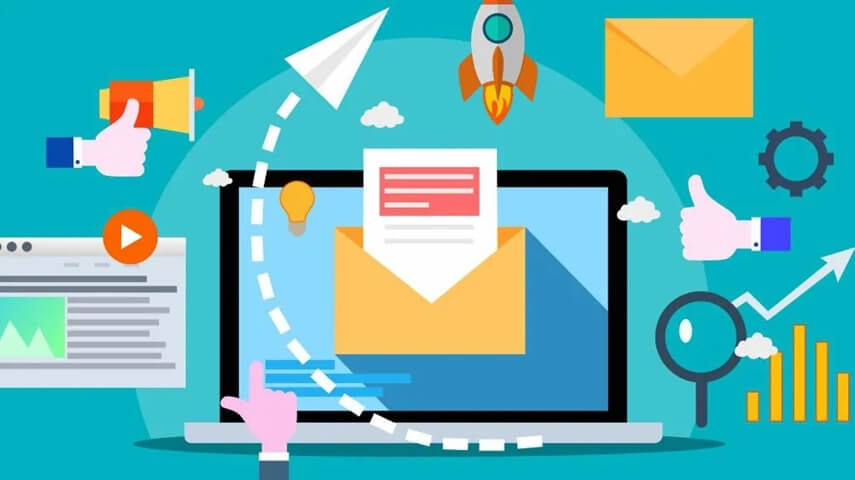Email remains a powerful tool for organizations to interact with their audiences and create leads in the ever-changing landscape of digital marketing. Despite the rise of numerous social media platforms and other digital channels, efficient email marketing continues to provide a high return on investment. In this in-depth tutorial, we’ll look at tried-and-true email tactics that can greatly enhance your lead generating efforts.
Understanding the Importance of Email Marketing Strategies
Before diving into the strategies, let’s briefly underscore the significance of email marketing in the digital age. Emails provide a direct line of communication between businesses and their target audience, allowing for personalized and targeted messaging. According to a study by the Data & Marketing Association, email marketing has an impressive median return on investment of 42:1, making it a cost-effective approach for lead generation.
Segment Your Email Lists for Personalization
One of the key principles of effective email marketing is personalization. Generic, one-size-fits-all emails are less likely to resonate with your audience. By segmenting your email lists based on demographics, behavior, or preferences, you can tailor your messages to specific groups, making them more relevant and engaging. Personalization has been shown to increase open rates and click-through rates, ultimately driving more leads.
Craft Compelling and Relevant Content
Content is king in the digital realm, and this holds true for email marketing as well. Your emails should provide value to the recipients, whether it’s informative content, exclusive offers, or entertaining material. A well-crafted email not only captures attention but also encourages recipients to take the desired action, such as filling out a lead form or making a purchase.
Consider incorporating various types of content into your emails, such as blog posts, infographics, videos, and product demonstrations. Experiment with different formats to see what resonates best with your audience.
Implement A/B Testing for Optimization
Continuous improvement is a fundamental aspect of successful email marketing. A/B testing, also known as split testing, allows you to experiment with different elements of your emails to identify what works best. Test variables such as subject lines, call-to-action buttons, images, and email copy to determine the most effective combinations.
By analyzing the results of A/B tests, you can optimize your email campaigns over time, leading to increased engagement and better lead generation. Keep in mind that testing should be an ongoing process, as consumer preferences and behaviors can change.
Utilize Eye-Catching Subject Lines
The subject line is the first thing recipients see, and it plays a crucial role in whether your email gets opened or ignored. Craft compelling and curiosity-inducing subject lines that encourage recipients to click and learn more. Avoid misleading or clickbait subject lines, as they can damage your credibility and lead to increased unsubscribe rates.
Experiment with different approaches, such as urgency, personalization, and curiosity, to see what resonates best with your audience. Additionally, keep an eye on email analytics to assess the performance of different subject line strategies.
Optimize Emails for Mobile Devices
With the increasing use of smartphones, a significant portion of email opens occurs on mobile devices. Therefore, it’s essential to optimize your emails for mobile responsiveness. A seamless mobile experience ensures that your audience can easily read and interact with your emails, leading to higher engagement and improved lead generation.
Test your emails on various devices and email clients to ensure a consistent and visually appealing experience across the board. Pay attention to the formatting, font sizes, and call-to-action buttons to guarantee they are user-friendly on smaller screens.
Leverage Automated Email Campaigns
Automation is a game-changer in email marketing, allowing businesses to send targeted messages at the right time without manual intervention. Implement automated email campaigns based on user actions, such as website visits, form submissions, or previous purchases. For example, a welcome series for new subscribers or a series of nurturing emails for leads in the consideration stage can significantly impact your lead generation efforts.
Automation not only saves time but also ensures timely and relevant communication with your audience. Make use of marketing automation platforms to set up and monitor your automated email campaigns effectively.
Implement a Clear Call-to-Action (CTA)
Every email should have a clear and compelling call-to-action (CTA) that guides recipients on the next steps you want them to take. Whether it’s filling out a form, downloading a resource, or making a purchase, the CTA should be prominently displayed and easy to understand.
Experiment with different CTA placements, colors, and wording to find the optimal combination for your audience. A strong and persuasive CTA can significantly impact your conversion rates and lead generation success.
Personalize Automated Emails with Dynamic Content
To take your automated email campaigns to the next level, consider incorporating dynamic content. Dynamic content allows you to personalize emails further based on the recipient’s preferences, behavior, or demographic information. For example, dynamically changing product recommendations based on previous purchases or tailoring content based on geographic location can enhance the relevance of your emails.
Dynamic content not only improves engagement but also demonstrates to your audience that you understand their individual needs and preferences.
Monitor and Analyze Email Metrics
To gauge the success of your email campaigns and identify areas for improvement, it’s crucial to monitor and analyze key email metrics. Track metrics such as open rates, click-through rates, conversion rates, and unsubscribe rates. By understanding how recipients interact with your emails, you can refine your strategies for better performance.
Regularly review your email analytics and use the insights gained to iterate on your email marketing strategies. Identify patterns and trends to inform future campaigns and ensure continuous optimization.
Conclusion
Email marketing remains a powerful tool for lead generation when approached strategically. By implementing the proven strategies outlined in this guide, you can enhance the effectiveness of your email campaigns and build stronger connections with your audience. Remember, successful email marketing requires a combination of personalization, compelling content, and continuous optimization. Stay informed about industry trends, adapt to evolving consumer preferences, and consistently refine your approach to unlock the full potential of email marketing in driving lead generation for your business.




